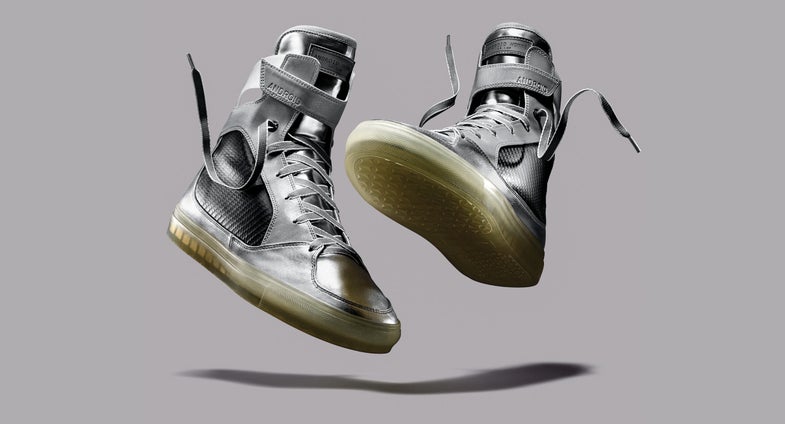Timeline: The Evolution Of Sneakers
Footwear has come a long way since 40,000 years ago.

There’s not a lot of wonder attached to the average sneaker, but imagine life without it. That’s the job of Steven Johnson. He hosts the show How We Got to Now, premiering on PBS and BBC Two on October 15. Johnson traces how mundane discoveries influence future inventions. “We’re trying to shift the focus in terms of what we talk about when we talk about innovation,” he says. In the spirit of celebrating overlooked origin stories, we examine the humble beginnings of the sneaker.
40,000 Years Ago
Determining when humans began wearing shoes relies on the fossil record. One theory based on anatomical changes in feet date the first shoe-wearers to Paleolithic times.
1790
A British inventor ushers in the era of modern shoelaces. Tying things with strings wasn’t new, but until then, shoes were largely fastened with buckles or buttons.
1844
Charles Goodyear files a U.S. patent for vulcanization, which processes natural rubber into a durable product. The process paved the way for rubber-soled shoes.
1858
Lyman Reed Blake patents a sewing machine that can affix shoe uppers to soles. Later improved and called the McKay stitcher, it sped the shoe production process dramatically.
1916
The United States Rubber Company announces Keds, the first mass-produced shoe marketed as a “sneaker.”
1978
Nike founder Bill Bowerman patents his waffle-soled running shoe concept. The design provided better traction.
2013
New Balance and Nike announce the first mass-produced athletic shoes with 3-D printed soles, kicking off a new age in customized footwear.
This article originally appeared in the October 2014 issue of Popular Science.